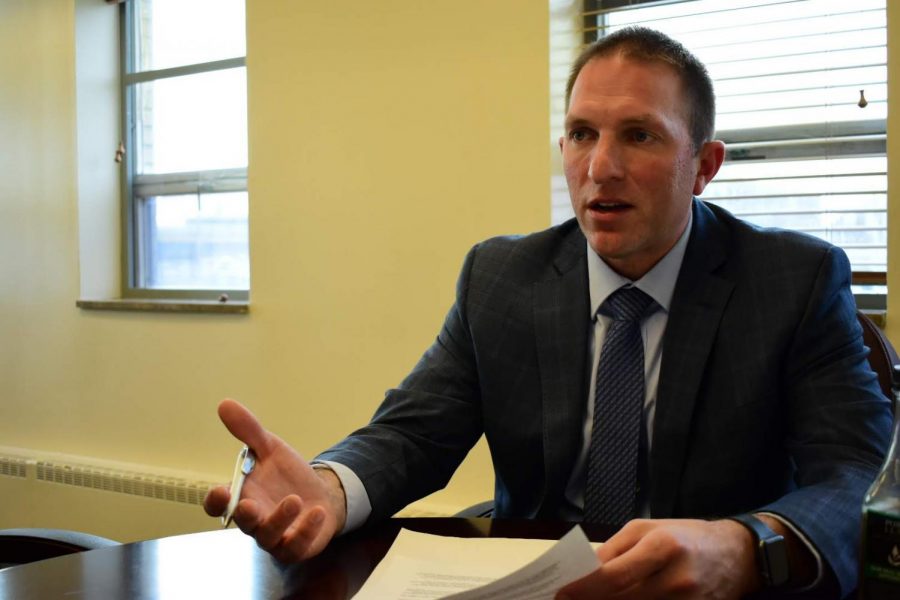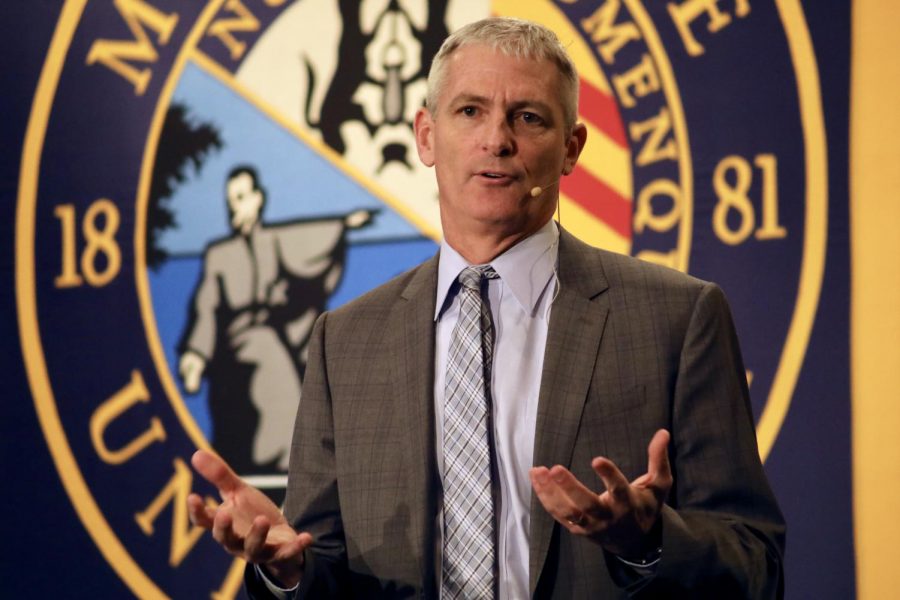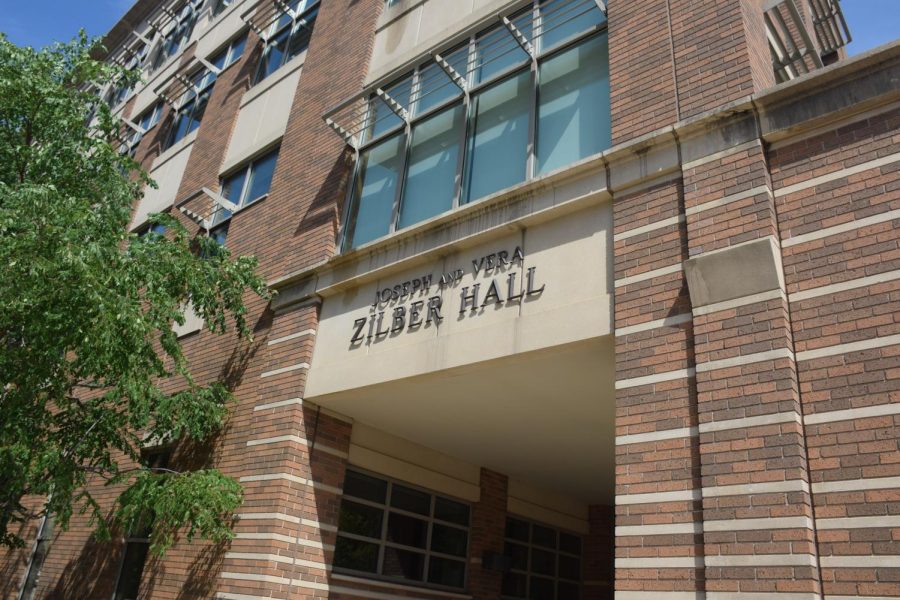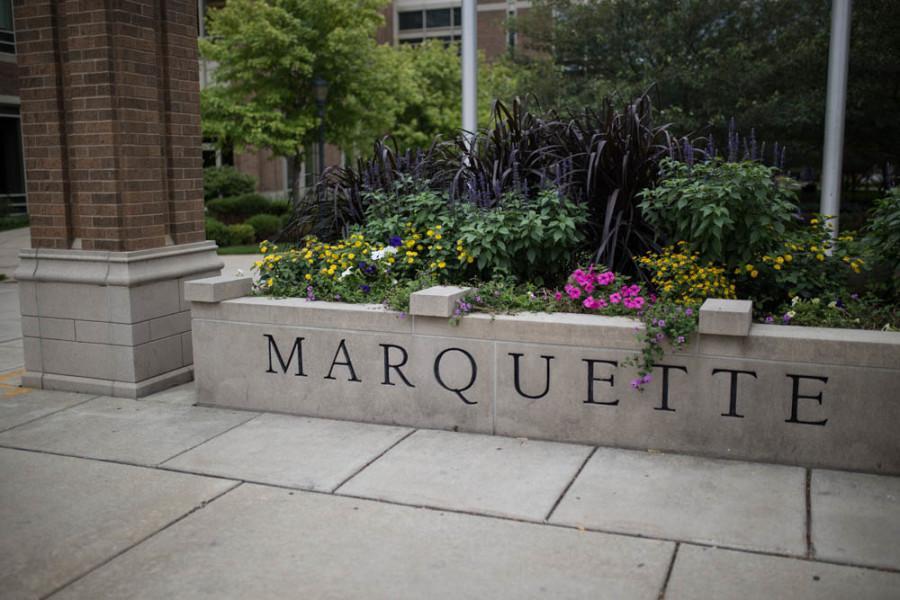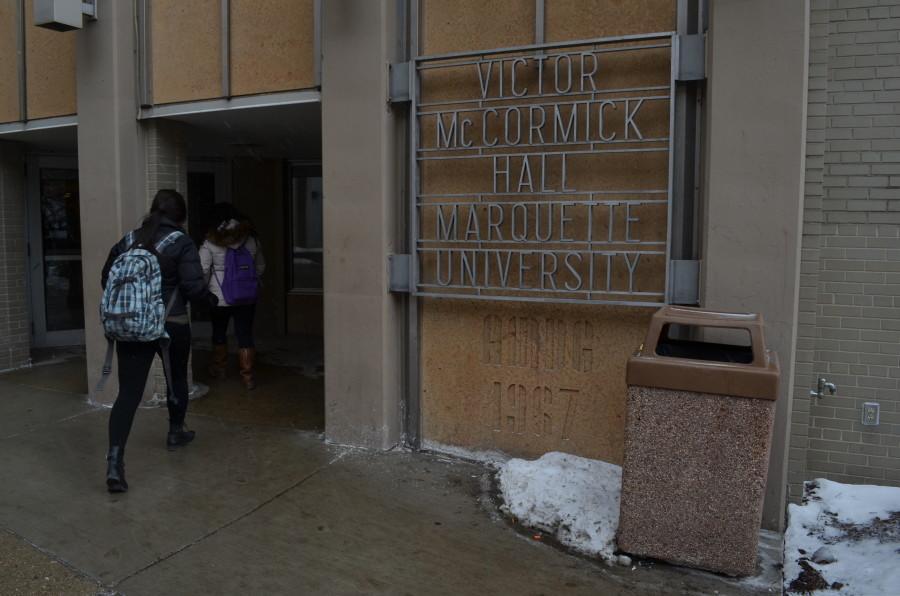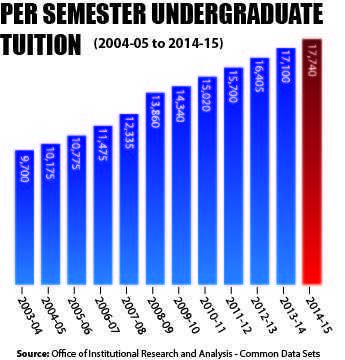Marquette University is planning to cut $3-4 million from its expenses in order to reduce future tuition increases.
Ian Gonzalez, vice president for finance, said that Marquette is “well-positioned, but proactive changes are needed to address the increasingly challenging landscape of higher education.”
The objectives of the proposed cut are to maintain tuition affordability and sustain financial stability at Marquette.
Gonzalez said that, guided by data and collaborative input, there will be campus-wide efforts to create a “bottoms-up approach where efficiency ideas are derived from individual campus units.” He said that the office of finance will help guide “units” on campus to identify areas they can implement efficiency and cut non-essential spending. There will then be review sessions with each unit followed by implementation. He said that cost savings are expected to make an impact in the fall of 2021.
In an email, President Michael Lovell said that in order to minimize future tuition increases, the university is making a goal of removing $3-4 million of annual expenses. This represents less than 1% of the university’s total budget.
“Every unit on campus will be given an overview of their current cost structure and will be asked to generate and implement cost-saving ideas,” he said in the email.
The current budget is largely comprised of compensation, with about 62% of Marquette’s expenses going toward salary and benefits for faculty and staff, Gonzalez said. He also said that this is a common budget breakdown for universities.
Not all universities publicly release this information in their budget breakdowns. For example, the University of Wisconsin-Madison only releases a percentage breakdown by department within the university without specifying how much of the money is allocated toward faculty and staff compensation and how much is channeled more directly to students, according to its Budget in Brief for the 2018-2019 school year.
“Another large category is student services and support, which includes costs associated with technology, public safety, academic support services, resident life and recreational services,” Gonzalez said. “Facility services is another notable category which includes depreciation of buildings and costs to manage facilities.”
Interest expense, insurance and other operating costs of administrative support units make up the rest of the budget.
When deciding tuition increases, Gonzalez said “the university considers many factors after undertaking a thorough evaluation of our costs and efficiencies” in order to help lower expenses and ease the financial pressure on student tuition.
Anna Quade, a first-year in the College of Arts & Sciences, said that she believes keeping costs manageable is very important for a university and its students.
“There’s the expectation that they’re going to graduate with a certain amount of debt and they’re going to spend a certain amount of money,” Quade said. “That can be incredibly influential in a student’s life … how much they have to spend on education.”
She said that although the budget cut has its positives, any potential negatives will depend on what the university ends up cutting.
The planned budget cut is part of the Beyond Boundaries Sustainability of Valuable Resources theme, Gonzalez said.
Beyond Boundaries is a strategic plan to sets in motion a clear strategy for the future, according to the university’s website.
The plan is built around six themes, which include Formation of Hearts and Minds, Social Responsibility Through Community Engagement, A Culture of Inclusion, Sustainability of Valuable Resources, Pursuit of Academic Excellence for Human Well-Being and Research in Action. Each theme has a theme leader. The Sustainability of Valuable Resources theme is led by Joel Pogodzinski, senior vice president and chief operating officer.
Gonzalez said the goal of this program “is to continuously improve university operations to increase efficiencies, sustain shared resources and thrive in tomorrow’s competitive higher education landscape.”
He also said that tactics within the theme include “leveraging new or enhanced revenue opportunities, fostering philanthropy to advance the university, leveraging and monetizing university assets, investing human capital and identifying operational efficiencies.”
According to the National Center for Education Statistics, “between 2006–07 and 2016–17, prices for undergraduate tuition, fees, room and board at public institutions rose 31%,” yet “decreased 11% between 2006–07 and 2016–17, after adjustment for inflation.”
Gonzalez said there are routine attempts to control tuition increases, with occasional, more significant measures. He said that in the fall of 2019, a careful review process resulted in significant cost management efforts to head off anticipated fiscal challenges. These efforts, Gonzalez said, “included laying off certain staff members and not filling certain vacant positions.”
He said there are constant efforts to manage headcount additions and reductions, which include a cross-disciplinary review process for any new positions.
Additionally, Gonzalez said that the university currently has three initiatives underway in order to further its cost management efforts.
“First, the university held a ‘Think Different, Act Different’ event in November to leverage the ideas of hundreds of people throughout the campus community,” Gonzalez said. “Second, a space optimization study is underway that will help us determine how to best utilize our resources by maximizing our current space and more holistically managing our 60 campus buildings. … Finally, the university is seeking further operational efficiencies guided by data and collaborative input.”
Lovell also explained these efforts in his presidential address on Jan. 29.
The goal of $3-4 million was reached based on “reviews of university wide financial data and trends and after consideration of the three aforementioned initiatives that are avenues in place to achieve the target,” Gonzalez said.
He clarified in an email that the target will be met by combined efforts through the Operational Efficiencies initiative he is leading and the “Think Different” campaign Dr. Jeanne Hossenlopp, vice president for research and innovation, is leading. Though the Space Optimization initiative Lora Strigens, vice president for planning and facilities management, is leading is also expected to result in efficiencies, it is not included in the $3-4 million target.
Gonzalez said that the Office of Finance will not over-manage the process in order to allow each unit on campus to decide its own budget cuts.
He also said that the benefits of the budget cut are wide and that any detriments will be minimized by focusing on reductions or changes of non-critical items. Gonzalez said the university does not anticipate any additional headcount reductions beyond the layoffs announced last fall, though he said that just like any other institution, the university will remain aware of changing market conditions and industry challenges.
The university will remain in the planning phase of the budget cut process until April 2020, after which it will enter the execution phase that will “ensure efficiencies are sustained through by creating policies and procedures to monitor and control,” Gonzalez said.
This story was written by Shir Bloch. She can be reached at [email protected].

